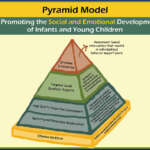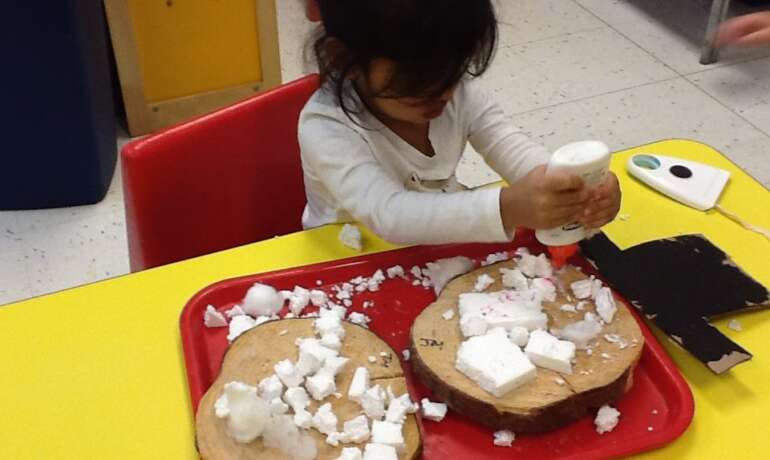In order to promote socio-emotional development and prevent the manifestation of problematic behavior in children, a valid approach must promote the establishment of high-quality educational environments. The pyramid model is an approach that concerns socio-emotional behaviors.
This approach implies a hierarchical conception of interventions that promotes quality socio-emotional development, the prevention of challenging behaviors, and the implementation of interventions when there is a “problem “of behavior.
The first level at the base of the pyramid, primary level includes strategies for all young children. These strategies aim to build positive relationships between the child, his peers, and adults.
For children with risk factors, or who exhibit certain socially problematic behaviors, the model provides for secondary level strategies.
At this level, a high intensity of support measures, family involvement and data collection to assess the progress of the child.when the child does not respond adequately to these interventions and his or her behavior persists, more intensive and individualized interventions are required, this is the third level.
The Pyramid Model is actual a lot more than just a visual, but is often implemented program-wide as a PBS.
“In program-wide implementation, a leadership team guides the implementation process and develops the supports and infrastructure needed to ensure that implementation of the Pyramid Model can occur within the classrooms and services provided to children and their families. The Leadership team, with representation from program administrators and practitioners, is focused on the ongoing process of supporting the implementation of the Pyramid Model and using data-based decision-making to guide implementation efforts and monitor outcomes” (https://challengingbehavior.cbcs.usf.edu/Implementation/Program/index.html (Links to an external site.)).
That being said, it is a great visual tool to convey needs to parents!






2 Comments
This design is wicked!
You most certainly
know how to keep a reader amused. Between your
wit and your videos, I was almost moved to start my
own blog (well, almost?HaHa!) Excellent job.
I really enjoyed what you had to say, and more than that, how you
presented it. Too cool!
First of all I would like to say fantastic blog!
I had a quick question that I’d like
to ask if you do not mind. I was interested to know how
you center yourself and clear your thoughts
prior to writing. I’ve had trouble clearing my mind in getting my thoughts out there.
I truly do enjoy writing however it just seems like the first 10 to 15 minutes are generally lost simply just
trying to
figure out how to begin. Any recommendations or hints?
Kudos!